#Best Book Editor Software
Explore tagged Tumblr posts
Note
Do you think it's a good idea to try and get away from Google Docs when it comes to writing? I really can't afford any other fancy program to write my drafts in, and it honestly seems like the easiest - not to mention, most convenient - program to use to share my manuscript with beta readers. I could use advice on this matter because I keep seeing things across the net about it being a bad place to work on writing, but I have no idea what to turn to to make things easy for me and my future beta readers.
This is such a good question. Thank you.
So, a little backstory. Ever since Google removed their motto "do no evil" they have gone down the rather predictable path of all big players of the rot economy: putting profits over user experience.
A little while back, there was rumor that Google trains AI with the content of google docs, then they said they don't really, they only scan the content and do nothing with it, and then they started blocking access to documents with sexy images. Do we believe that Google has our own best interest at heart? That's something everyone has to decide for themselves.
Back then, I made a post with alternatives for Google Docs, you can find it here, also check the reblogs for more options:
Now, is it a good idea to switch from google docs? I think it is, but I'm also not consistent with it. As you mentioned, it seems to be the easiest to share writing with beta readers, and I also still often use it for fanfiction.
But there are alternatives, and they require very little adjustment in the process. Let me give you two free options.
Ellipsus is webbased, meaning you can write in it in the browser on any device. They have sharing, specifically for beta reading, and an export function for AO3.
Reedsy (marketplace around everything self-publishing) has an editor. It is webbased, and they also have an option for sharing with beta readers. This software is aimed at book type-setting and exporting but it works just fine for copying to web.
Personally, I'm currently switching everything to LibreOffice (also free!) files in some cloud connected folder. I used to do a lot of mobile writing on my phone with a bluetooth keyboard but currently, I'm taking my laptop everywhere so LibreOffice works great for me. If I have to use my phone or tablet for some lightweight mobile writing, on vacation for instance, I can still use something webbased.
So, I hope I gave you some interesting options. Do I think it's a good idea to make us less dependent on Google? Yes, I do. I don't trust them.
We have alternatives, and they cost us nothing more than a little adjustment.
~ barbex
#writing software#writing tools#alternatives to google docs#barbex gives advice#ellipsus#reedsy#google docs#libre office
1K notes
·
View notes
Text
Helpful Websites & Apps for Writers

A list of helpful websites, apps, and other resources for writers and writing.
Websites for Writers A list of different writing resources, such as online writing communities, research help, free online writing courses, and free writing worksheets.
NaNoWriMo Alternatives A list of different online writing communities and word tracking tools.
Online Writing Communities A tumblr thread with a short list of online writing communities. Includes a writing website for fantasy and science fiction writers, and a website for offering and receiving critique on writing.
Helpful Sites for Writers A short list of helpful resources for writers. Includes websites for character names, an online age calculator, an online height comparison tool, a slang dictionary, and a website to check the weather anywhere in the world.
53 Best Tools for Writers A detailed list of online tools, websites, and apps for writers. Includes both free and paid apps and programs. Note: Please do your research, as a few of the listed websites/apps appear to use generative AI.
Creative Writing Tools A lengthy, detailed list of several resources for writers, including writing apps and programs, online dictionaries, online writing courses, ambient noise websites, image websites, and online PDF tools. Note: Please do your research. There is an entire section of generative AI websites/apps.
The 23 Best Writing Tools of 2025: A Guide for Writers A lengthy, detailed list of different writing programs and apps, online organization and productivity tools, and online editing tools. Includes both free and paid apps and programs. Note: Please do your research, as a few of the listed websites/apps appear to use generative AI.
The Best Book Writing Software A list of different writing programs and apps. Includes both free and paid apps and programs. Each review includes the software’s pros and cons.
For more helpful websites for writers, check out some others I’ve shared: Dictionary & Thesaurus Names for Your Characters Detailed Character Profiles
+
I’m a writer, poet, and editor. I share writing resources that I’ve collected over the years and found helpful for my own writing. If you like my blog, follow me for more resources! ♡
542 notes
·
View notes
Text
Writing Notes: Cookbook

Whether you want to turn your own recipes into a cookbook as a family keepsake, or work with a publisher to get the most viral recipes from your blog onto paper and into bookstores, making a cookbook is often a fun but work-intensive process.
How to Make a Cookbook
The process of making a cookbook will depend on your publishing route, but in general you’ll need to work through the following steps:
Concept: The first step of making a cookbook is to figure out what kind of cookbook this will be. Your cookbook can focus on a single ingredient, meal, region, or culture. It can be an educational tome for beginners, or a slapdash collection of family favorites for your relatives. If you’re looking to get your cookbook published, a book proposal is a necessary step towards getting a book deal, and can also help you pin down your concept.
Compile recipes: If you’ve been dreaming of writing a cookbook, chances are you probably already know some recipes that have to be included. Make a list of those important recipes and use that as a jumping-off point to brainstorm how your cookbook will be organized and what other recipes need to be developed. If you’re compiling a community cookbook, reach out to your community members and assemble their recipes.
Outline: Based on your guiding concept and key recipes, make a rough table of contents. Possibly the most common way to divide a cookbook is into meals (appetizers, breakfast, lunch, dinner) but cookbooks can also be divided by season, raw ingredients (vegetables, fish, beef), cooking techniques, or some other narrative structure.
Recipe development: Flesh out your structure by developing beyond your core recipes, if needed, and fine-tuning those recipes which need a bit more work.
Recipe testing: Hire recipe testers, or enlist your friends and family, to test out your recipes in their home kitchens. Have them let you know what worked and didn’t work, or what was confusing.
Write the surrounding material: Most cookbooks include some writing other than the recipes. This may include chapter introductions and blurbs for each recipe.
Photography and layout: If your book includes photography, at some point there will be photo shoots where the food will have to be prepared and styled for camera. Traditional publishing houses will likely want to hire stylists and photographers who specialize in food photography. Once the images and text are both ready, a book designer will arrange them together and make the cover design, but you can also make your own cookbook design using software like InDesign or old-school DIY-style, with paper, scissors, and a photocopier.
Editing: If you’re working with a publisher, there may be several rounds of back and forth as your editor works with you to fine-tune the recipes and text. The book will then be sent to a copy editor who will go through the entire cookbook looking for grammar and style issues, and indexer for finishing touches. If you’re self-publishing, give a rough draft of your book to friends and family members to proofread.
Printing: After everything is laid out and approved, your cookbook is ready to be printed. If you’re printing your cookbook yourself, you can go to a copy shop to get it spiral bound, or send it off to a printer for more options.
Common Types of Cookbooks
More so than any other kind of nonfiction book, cookbooks lend themselves to self-publishing. Of course, cookbook publishing is also a huge industry, and a professional publisher might be the best route for your book depending on the scope and your reach as a chef.
Self-published: This is a cookbook made of up your own recipes, which you might give as gifts to family and friends. You can easily self-publish a cookbook online as an individual. But if having a print book is important to you, there are many options. You can print and staple together a short cookbook, zine-style. Many copy shops will also offer options for wire-bound cookbooks, and there are resources online that will print bookstore-quality softcover or hard-cover books for a fee.
Community cookbooks: A special subset of self-published cookbook made up of recipes from multiple individuals, usually to raise money for a cause or organization. Working with a group has the advantage of a large pool of recipes and testers, and is a great way to share your recipes with a larger audience while also supporting a cause you believe in.
Through a publishing house: If you think your cookbook has a wider audience, you may want to seek out a mainstream publishing house. Get a literary agent who can to publishers who can connect you with publishers who are interested in your cookbook. Large publishing houses don’t usually accept pitches from individuals, but you can reach out to small, local publishers without an agent as intermediary. To publish a cookbook through a publishing house, you’ll typically need a book proposal outlining your concept, audience, and budget.
Things to Consider Before Making a Cookbook
Before embarking on your cookbook project, it’s a good idea to get organized, and to figure out what kind of cookbook you want to make.
Photography: More so than other texts, cookbooks often include visual accompaniment. Beautiful pages of full-color photos are expensive, which is one reason publishers like to work with bloggers who can style and photograph their own food. Not all cookbooks need photos, however. Some of the most iconic cookbooks rely on illustrations, or words alone. Figure out what role, if any, visuals will play in your book.
Audience: Are you turning recipe cards into a keepsake family cookbook, or selling this cookbook nationwide? Your intended audience will greatly influence how you write and publish your cookbook, whether it’s vegans, college students, or owners of pressure cookers. You’ll need to consider your audience’s cooking skill level, desires, and where they buy their food.
Budget: Once you have a vision for what you want your cookbook to be, budget your time and resources. Do you need help to make this book? The answer is probably yes. Assemble a team of people who understand your vision and know what kind of commitment will be involved.
Source ⚜ More: Notes & References ⚜ Writing Resources PDFs
#cookbook#nonfiction#writing reference#writing tips#writeblr#dark academia#literature#writers on tumblr#spilled ink#writing prompt#light academia#writing ideas#writing inspiration#writing resources
48 notes
·
View notes
Note
May I ask the software you use to write?
Congratulations on getting so much done!
Thank you so much. And, of course.
I use the Reedsy Book Editor for all of my writing projects, and I've been using it for about three years now. I also have experience with other amazing softwares, and I would love to create more tutorials on them if you need me to.
Here's a quick tutorial on how to use the Reedsy Book Editor.
When you visit the website, the first thing you'll come across is this page. It's a completely free writing tool with a fantastic interface. All you need to do is sign up with your Google or Facebook account.
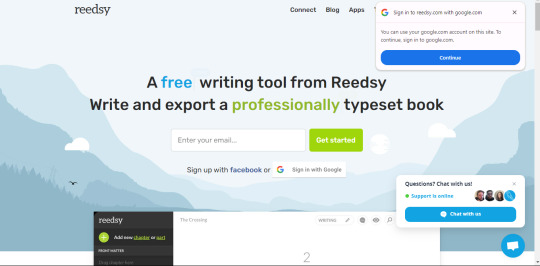
After you've completed the sign-up process and provided some information about yourself, you will be directed to this page. Please locate the "Books" option in the website's header.
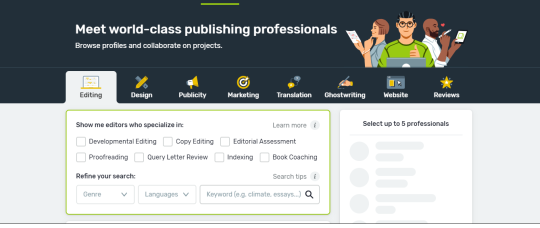
Feel free to give your book/WIP (Work in progress) a title. Remember, it's okay if it's not your final title, as you can always change it in the settings of your book later.
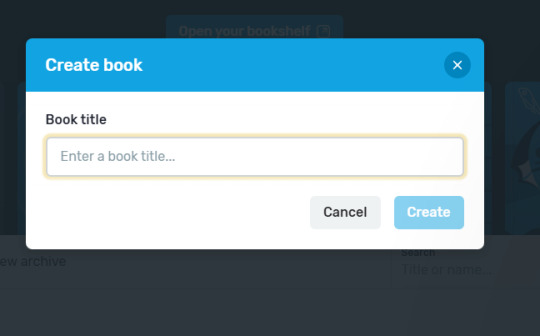
Once you've created it, you can take your time and when you're ready, you can click "Write.”
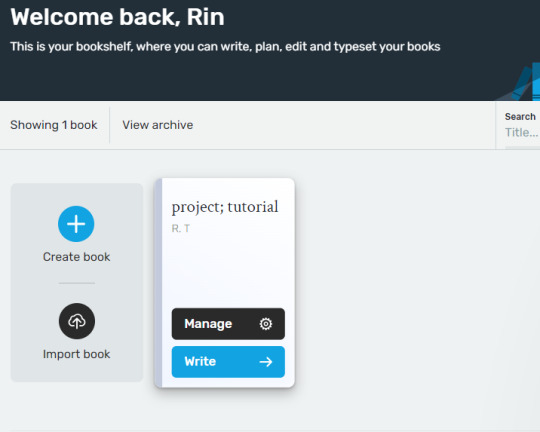
Once you click "Write," you'll be directed to the next page. There, you'll find your chapters, the space to write your manuscript, and a sidebar with various helpful features provided by Reedsy.
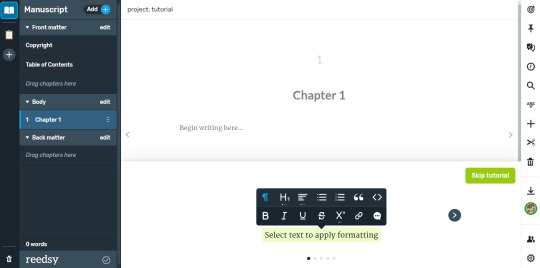
Then, you can choose any name for your chapter that feels meaningful to you.
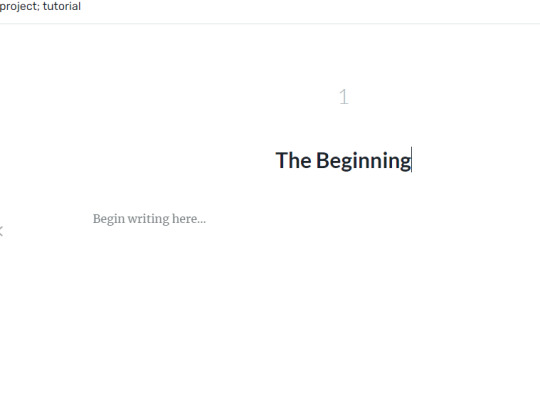
You can also track your writing goals for your specific manuscript or book. This feature provides insights into your writing habits, such as the days you've written and the number of words you've written. You can also set a target word count goal for the manuscript, and you also have the option to set manual writing goals. Additionally, you can check the word count in your current chapter from the bottom of the widget.
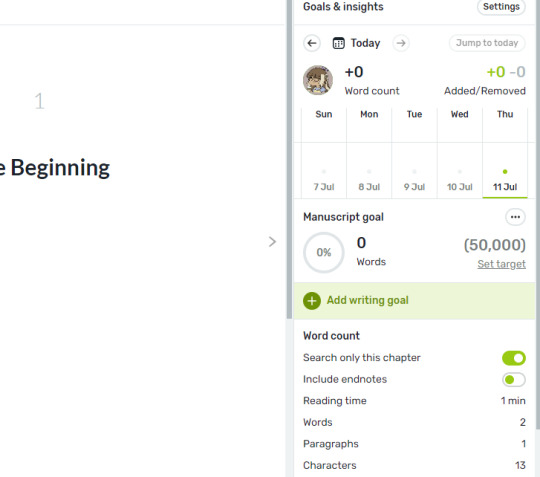
You have the option to set a deadline and choose the days that work best for you to write. This will help Reedsy estimate a realistic word count goal for you.
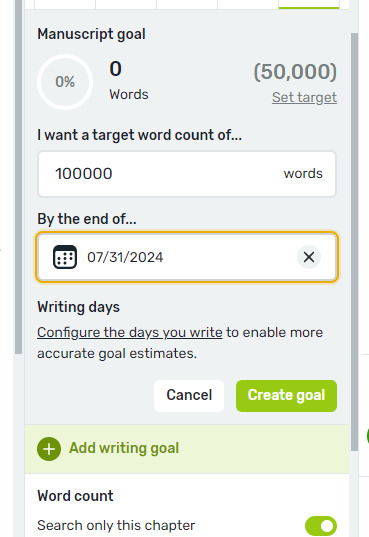
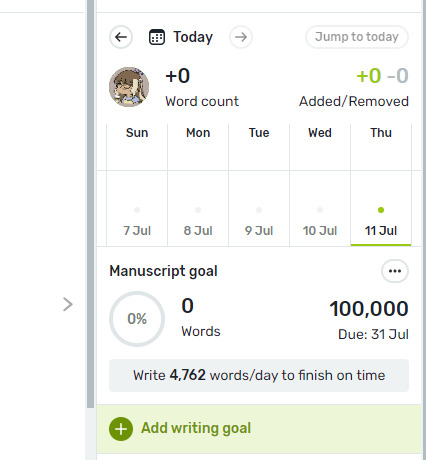
Remember that on Reedsy, there's a new beta feature that allows you to plan and outline your novel without having to leave the website. It offers note cards for you to jot down the plot and scenes from your novel, which can serve as a helpful guide and provide a simple outline to support your writing process.
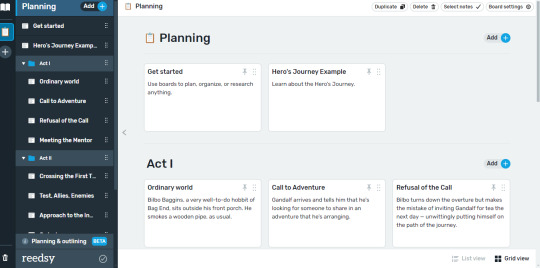
Also, don’t forget the various features available to you when creating your book in Reedsy. For instance, you have the option to include preset formatted pages such as a dedication page and an epigraph that resonates with your story. These features can add a lot of value to your book, and I encourage you to explore them further.
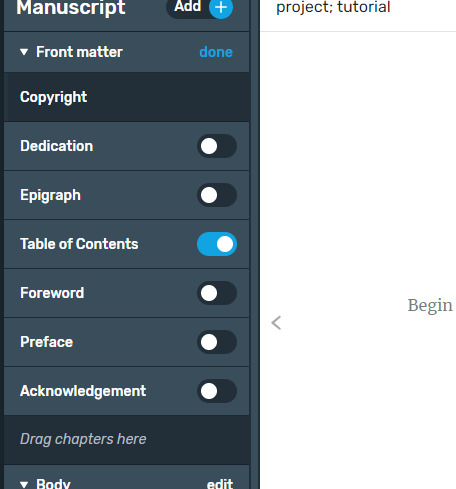
Hopefully this can help you understand the basics of Reedsy Book Editor. One of my favorite writing softwares that is completely FREE!
Hey fellow writers! I'm super excited to share that I've launched a Tumblr community. I'm inviting all of you to join my community. All you have to do is fill out this Google form, and I'll personally send you an invitation to join the Write Right Society on Tumblr! Can't wait to see your posts!
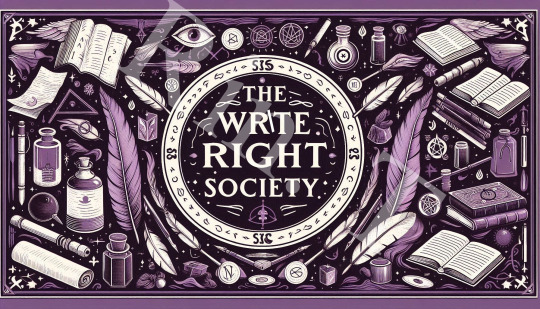
#writeblr#creative writing#thewriteadviceforwriters#writers on tumblr#writer things#writing#writing tips#on writing#writer#writer community#writing tools#writing resources#writing blog#writing advice#fiction writing#novel writing#author#book writing#publishing#indie author#fiction#reedsy#book editor#bookblr#self concept#bookworm#bookstore#books and reading#reading#book quotes
189 notes
·
View notes
Text
worldbuilding websites list
guides/prompts
Fantasy Worldbuilding Questions - SFWA
Dr. Zahir's Ethnographical Questionnaire - FrathWiki
University of Auntimoany Ethnographical Questionnaire
Creature-Race creation sheet by Sethian-Motzart on DeviantArt
Worldbuilding Bible Template – Ellen Brock
Guide to World Building - Pantheons — Dump Stat Adventures
Building a Pantheon: How to Choose Your Gods - Tribality
Making Gods & Pantheons: Worldbuilding Abstract | Red Ragged Fiend
I invented this world building system for myself, and it's helped me a lot. Posting it here in case it helps somebody else too! (and because mnemonics are rad) : r/worldbuilding
Simple Ideas for Your Solarpunk Worlds : r/worldbuilding
50 Worldbuilding Prompts : r/worldbuilding
A few months ago I posted a not-so-elegant expansion of the 4-elements system, and got tons of truly excellent feedback. Inspired by the exciting discussions from back then, here is version 2.0! CC appreciated :) : r/worldbuilding
TheCosmicForces-WoWChronicleSample.png (PNG Image, 1350 × 1800 pixels) — Scaled (37%)
GitHub - honno/classical-elements-expansion: Because the alchemical elements are so last millennia.
brownlisthumanuniversals.pdf - Google Drive
Worldbuilding: Fantasy Religion Design Guide – Inkwell Ideas
Worldbuilding: Clothing and Fashion | HumanVariant
A Guide to Conworld Architecture : r/worldbuilding
Medieval Bestiary : Contents/SiteMap
kosemen-2017-updated-edition-of-book-all-your-yesterdays.pdf
Political Simulator
A World Building Checklist | Articles | cru’s D&D Reading Room
Split City
Fantasy name generators. Names for all your fantasy characters.
word processors/graph makers/visualizers
TiddlyWiki — a non-linear personal web notebook
bibisco: Best Novel Writing Software for Writers
Preceden Timeline Maker: Create a Timeline in Minutes
Timetoast timeline maker | Timetoast timelines
Free online timeline maker
draw.io
Parliament Diagrams
TreeGraph 2 - A phylogenetic tree editor
Fantasy Calendar - Level up your narrative
Family Echo - Free Online Family Tree Maker
Hero Forge Custom Miniatures
Tennessine
Courtney’s Picrew Zone
Ellipsus | Collaborative writing software
real world inspiration
The Meaning and History of First Names - Behind the Name
Geologic Time Scale - Major Divisions of Geologic Time Chart
Geologic Time Scale v. 6.0 - The Geological Society of America - timescl.pdf
Travel Through Deep Time With This Interactive Earth | Smithsonian
ChronostratChart2023-09 - ChronostratChart2023-09.pdf
ics-chart
International Commission on Stratigraphy
Home - Nationalclothing.org
Folk Fashion Tumblr - Traditional Clothing from the world
Glossary for Medieval Art and Architecture
Heraldry Links-A Free Learning Resource
Flags of the World
Food Timeline: food history research service
History of invention: A science and technology timeline
Medieval Bestiary : Animals in the Middle Ages
Medieval Life
Medievalists.net - Where the Middle Ages Begin
Historical World Maps - World History Atlas
65 notes
·
View notes
Text
going on the twine rant again, lads. fair warning.
-
the twine editor is theoretically great software
which is to say, twine editor is far and away the best execution of "a text game maker for people who mostly make text and not games" that presently exists. it's notable for making wholly self-contained (read: does not require interpreter software) text games with functioning mechanics at about the level of code literacy you could feasibly ask from people who brushed off of other more complicated software
this is in large part because the text adventure and IF ecosystem has the same problem as the (similarly insular and incestuous) scorewriting ecosystem: all of the software is made to be used by a group of like 50 people who don't use anything else, so they just settle for whatever exists
twine solves a lot of these problems by simply existing as an html game maker that can automate all of the functions of a gamebook out of the box. the editor has features which (to me) seem to be inspired by scrivener, which is my favourite WYSIWYG writing software for longform fiction on the market (I prefer writing in LaTeX but I can acknowledge that's a habit I picked up and not an endorsement of LaTeX)
that being said, even though there's an obvious utility to being able to prototype out rpgs and such in twine incredibly quickly, I can't really recommend people... use twine for that. because of the problems.
the twine editor is also kind of beautiful for all the ways in which it issoftware designed to torture the user
twine exists with one foot in "games" and one foot in "writing" and this overlap is the totality of its intended use. this space of compromise is still the best that's been made for this specific scene, but it means that edge cases are (at absolute best) operating twine in much the way that someone being hanging onto the edge of a shattered cockpit is operating an airliner
I could go on and on about the specific elements of twine's design that drive me insane, and in how it punishes you both for making too much of a book and for making too much of a game, but there's one problem that kind of sticks out as a simulacrum of this whole issue
by design, twine organises its projects as a story map. this is kind of like the middle point between scrivener's storyboard and a whiteboard, but specialised for use in making text games. this means that each node on it is one screen, called a card, that you can open and edit
doing this opens a window for text input, and the exact contents of this window kind of depend on which format you're writing your story in, but as a rule, you write everything into these sub-windows and that's the game
because twine runs in one window, these cards open more like menus than true windows. you can have one open at a time, and when you need to test something, you close the window and press the button to test the game. simple as
now, for making software, it's helpful to have a versioning function of some sort in case, among other reasons, you fuck something up in a way you don't immediately notice
for writing, you usually want some sort of undo function, in case you accidentally delete something or edit over it
at the intersection of these two, twine does have an undo function. which works differently depending on which version of the editor you're using. in the web version, you get multiple layers of undo. that makes sense.
in the downloaded version, which is the version you have to use if you don't want to use your browser's local storage (?? you shouldn't be doing this) you get
one layer of undo.
in a modern text editor.
that you are expected to write in.
this is on top of the browser-hosted version of twine editor being significantly more stable than the desktop version, so that's obviously the version you're meant to use, which runs in stark contrast to like... how that should work. this should already be raising your blood pressure a little bit if you remember that the browser version of twine saves your project files to your browser's local storage
now, common to both versions is another important feature which seemingly exists to prevent data loss: twine automatically saves your changes when you exit out of a card
this means that, the moment you close a card to go test the changes you just made to your game, they are saved over the previous version of the game with no way to undo them
but there IS a way to get around this without having to write in an entirely separate word processor! several ways even. you can even use the downloaded version if you do this
duplicate the full project every single time you make changes that could necessitate an undo function
make a copy of every card you edit in case you need to revert to it after testing, then remember to delete it afterwards
if you're editing the cards themselves, see option 1, because there is no way to undo deletion of cards in the story map
and like... that's not good. it's kind of the hell machine for killing all human beings, actually
it's also not a problem remotely unique to twine, because this is the kind of thing you see in most niche-specialised software where there isn't really a distinction made between "this is an expected frustration of working on any artistic project" and "this is something completely insane that absolutely should not be the case and isn't tolerated in immediately adjacent comparable creative fields"
twine can be used to make longer projects, but at the point where you're recommending two layers of supporting software that overlap so hard with the editor that they should be redundancies, it becomes clear that the only thing it's really fit-for-purpose to do is non-linear fiction consisting of two or three paragraphs per card
and that's generally not what it's used for! because that sort of thing is almost universally understood as a stepping stone towards using twine for making either longform non-linear fiction or full-featured rpgs
twine could be really useful software, and in fairness it's generally better than the alternatives it supplanted in its niche (people making little interactive poems probably shouldn't be trying to use Inform or TADS), but it really seems like it was designed with as a cursed amulet meant to cause as much grief as possible while being difficult to justify throwing away
126 notes
·
View notes
Text
Comprehensive List of Tips for Self-Publishing Authors

Cover Design
"Never judge a book by its cover" is a philosophy very rarely followed by most readers, so it's important to make sure your cover is as eye-catching, aesthetically pleasing, and true to your story as possible. The cover should encompass what your story is about and it should give the reader a glimpse into the world you've spent years creating.
For most of us who are not artistically inclined, trying to create a cover design on our own is incredibly challenging. When you find yourself unable to generate an exemplary product, you may need to turn to a freelance designer or a company that specializes in poster/book cover graphics. Here are some options for you to explore:
Fiverr - budget-friendly, ample reviews from previous customers, and examples of work are provided by the designer, but make sure to be aware of AI use so your product is made authentically.
BespokeBookCovers - this company asks that you give a short synopsis of your book, along with some basic details, then you will be contacted to discuss more about what you are looking for. They do require a 50% deposit prior to beginning the design, but you do receive the product within 12 business days. They also ensure you are completely satisfied with the product before the transaction is complete. This company may not be the best for fantasy authors as most of their covers have more of a Colleen Hoover-esque aesthetic.
Miblart - This is a wonderful cover design company for fantasy writers, as evident in the examples provided on their website's home page. They do not require prepayment and offer payment installations in case the total cost at once puts a financial strain on you.
Editing and Formatting
Similarly to traditional publishing, you need to thoroughly self-edit your work before submitting it for professional editing. Suppose you feel as though you are proficient enough in editing that you do not require professional services or you cannot accommodate the cost. In that case, I suggest using workbooks or software to make sure your grammar and syntax are as high quality as possible. Here is a list of editing tools that can help you review your work:
Grammarly - a good resource for spelling, but it often flags intentional word-choice and sentence structure to make it more simple, which may be incompatible with your writing style. Also be aware of incorrect suggestions.
The Copyeditors Handbook - offers a guide to book publishing and addresses common writing errors. Does come with a workbook to help you exercise your skills.
It's also important that you understand the risks of self-editing. Sometimes it's hard to see flaws in your own story/writing because you already know all of the details. The reader does not have this knowledge, so certain plot points, wording, or details may be lost on them. Having a second set of eyes is incredibly beneficial to help you solve this problem. Here are some outside editing tools:
UpWork - allows you to list a job and review applicants. Each applicant is verified to be real, and you can sample some of their work and their credentials by viewing their profile.
Reedsy - employs Big Five editors to find a proper match for your writing
Raab & Co. - a self-publishing company that helps match you to a professional editor
ISBN
An ISBN number can help readers identify and find your book across multiple platforms, given that an ISBN is a unique number. You can buy an ISBN through Bowker or ISBN.org. An ISBN number on this website costs about $150 USD. This is not a necessary step, so no worries if you don't get one. It simply helps your book be more recognizable and appear more professional.
Pricing
The best way to figure out how to price your book is to look at similar publications on the platform you intend to publish on. Amazon is the most common, so look at your options. Generally, you can publish the book for a fixed price, or you can use Kindle Unlimited. Here's a list of pros and cons for Kindle Unlimited:
Pros:
Paid per page read, which is amazing for longer works or series
Saves a lot of time and effort as most of the work is done by Amazon, and it can generate more income than other platforms
Gain popularity because each time someone checks out your book or adds it to their library, it counts as a sale in your sales rank, which can boost your profile
Cons:
Unable to publish more than 10% of your book on any other platform while it is available on Kindle Unlimited, which limits your ability to reach a greater audience
Sometimes the length of the book affects income more so than the quality of the writing itself, so your book may be incredible well-written but have a lower sales rank.
#book blog#authors#bookish#books#bibliophile#bookworm#books & libraries#book review#booklr#self publishing#self publication#author#independent publishing#writing tips#writing resources#basics of self publishing#creative writing#writing#writeblr#writers on tumblr#writers and poets#writerscommunity
51 notes
·
View notes
Text
Graduates (5)🎓



Abeba Girma
Valedictorian / President, Young Lawyers Association / Broussard Justice Recipient
Abeba has done it again - highest GPA, on the fast track to make Junior partner before she even moved into her desk at the law firm. Her parents, Ephrem and Mazaa are over the moon. 
She will be taking a position in international law to help refugees and people who cannot afford to pay with immigration issues. She also secured a grant so that she can offer her services pro bono. Now to find a home for her and her Fiancée Baldwin.

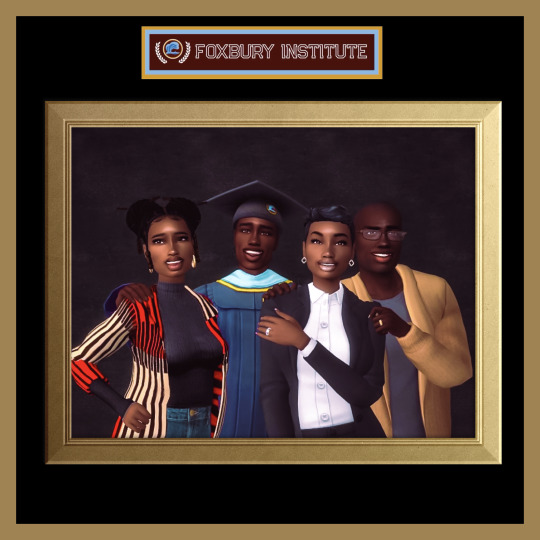
Baldwin Levesque
Computer Science Major / Young Innovators in Tech Award Recipient 🥇/ Valadictorian
Baldwin has hit the ground running - he’s already begun working for Meditech ™️ and is on the fast track to running his own team. He’ll be creating medical software that will play a role in medical surgery. Needless to say, his mother Xio is beyond pleased. His father Manu and his sister Zora are proud, but expected nothing less.
He and his fiancé Abeba just have one task aside from wedding plans – finding a home.


Micah Broussard
Journalism Major / Writer, Foxbury Insider
He made it, y’all. His parents, Bruce & Esther had their fingers crossed most of the time, but we’re here.
Although he originally wanted to be a sports journalist (if you’ve been following along, you know why… but let’s not bring her up right now), but thanks to his professor, he decided to go down the novelist path, while working for a digital paper in the meantime.
Now that he’s about to be a father, this suits him just fine. It will give him time to bring in a steady paycheck while working on his first book. Lucky for him, there are plenty of writers in the family to help guide him through the process. And Bubbe Ida and his sisters Shalom & Noa pie, of course.
Next up? Finish moving, baby shower, wedding. Possibly in that order. 

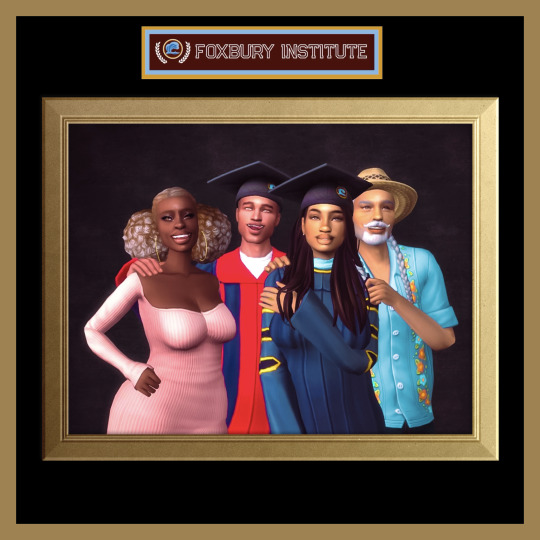
Alma Ramos
Journalism Major / Editor-In-Chief, Foxybury Insider / Latina Writer’s Guild / Foxbury
Granted, this is not how Alma saw her Uni experience ending. However, as all writers know, some of the best experiences are the plot twists. And maybe this is just a detour; plenty of young mothers manage to raise their children and have careers. She has a loving, committed partner in Micah, so anything is possible. Not to mention a strong family in her Abuelo Luis, her Tia Benni and her prima Yadira and Ya’s fiancée Ciara.

Previous / Next / Beginning
#shesthespinstersimmer#storyteller#sims 4 story#destination: san sequoia#abeba girma#ephrem & mazaa girma#baldwin levesque#zora levesque#xio & manu levesque#micah broussard#ida blum#bruce & esther broussard#noa broussard#foxbury#graduation#alma ramos#luis ramos#benita cruz
22 notes
·
View notes
Text

SFWA Posthumously Presents Jennell Jaquays with the 2024 Kate Wilhelm Solstice Award
A multi-award winning and honored artist, game designer, editor, and activist, Jennell Jaquays left an indelible mark on the gaming industry and SFF community for nearly fifty years. Ms. Jaquays’ career began in college, when she and her friends created “The Dungeoneer,” one of the first licensed Dungeons and Dragons fanzines. Now, from magazines to books, Ms. Jaquays’ art can be seen on multiple covers and throughout the pages of the many different forms and iterations of Dungeons and Dragons’ media. Having designed two modules of her own, “Dark Tower” and “The Caverns of Thracia,” her writing was celebrated by players for eschewing traditional and linear game mechanics and are not only playable today–but continue to inspire game designers and GMs. Also known for her game industry work at companies such as Coleco, TSR, and id Software, Ms. Jaquays designed and contributed to multiple projects such as Coleco Vision, certain levels on the Quake II and III video games, arcade conversions of Pac-Man and Donkey-Kong, Halo Wars, and created an expansion pack in Age of Empires III. Ms. Jaquays was nominated for multiple H.G. Wells Awards for her work and creation of the “Dark Tower” D&D module and for her design and illustrations on“Griffin Mountain.” Her work with Coleco’s WarGames won her the 1984 Summer C.E.S. original software award. Additionally, Castle Greyhawk won an Origins Gamer’s Choice Award for “Best Role-Playing Adventure,” and in 2017, the Academy of Adventure Gaming Arts & Design inducted Ms. Jaquays into their hall of fame. Inspired by her own journey, Ms. Jaquays also became a recognized transgender activist, spending time working as the creative director of the Transgender Human Rights Institute. “A beacon of hope and inspiration, Jennell Jaquays worked tirelessly in the spirit of community while gifting us with her art, her games, and her stories for almost fifty years,” said SFWA Director-at-Large, Monica Valentinelli. “The Board is honored to commemorate Jennell Jaquays and her indelible legacy as an artist, writer, and game designer in the video game and tabletop roleplaying industries.” Accepting on behalf of Ms. Jaquays at the 59th Annual Nebula Awards is her wife, Rebecca Heineman.
20 notes
·
View notes
Note
What advice could you give someone learning Java as a first language?
The best advice I can give to new programmers is:
Programming utilizes different problem solving skills that what you are likely used to. It will likely be overwhelming. This normal. It will get better as you grow more familiar with programming and learn new techniques, algorithms and best practices. Remember that this is Skill, and you improve your skill through practice.
DO NOT USE CHATGPT OR OTHER AI TOOLS TO START. If all you're doing is pasting what ChatGPT spits out then you are not really learning. It is more important to understand why you did something over getting a correct answer. You have to be able to defend your code and though process in a corporate setting if you are looking to pursue a career in software. (Think about this like showing your work in math class). When I took AP Comp Sci many moons ago, we used JGrasp a Java editor which is basically fancy notepad with a great debugger. No auto-complete, no code generation, not even spellchecking. When learning a new language you should learning the language, not the tools.
There are multiple correct answers any given problem. Programming is not like math where there is only 1 right answer for the problem. Solving the same problem in multiple ways is great way to expand your toolbox.
Some Java specific things:
If you're just starting, there is lots of AP Comp Sci course material out there. (books, quizzes, youtube, etc). You can surely find one that speaks to you.
If you have the language basics down make small graphical games like checkers, chess, etc in Swing. Its a great way to learn while doing something fun.
4 notes
·
View notes
Text
Useful Online Resources for Creative Students
Tips to controlling your creative chaos.
Studying Creative Writing and Theatre led me to exploring more about myself as an individual as well as an aspiring writer and actress. And in my writing I managed to compile a few more secret helpers to my party so when I am on the verge of a meltdown due to stress and writer’s block, there’s always a helping hand to get me out of a tricky situation.
Every writer has their tools, from their brain to the type of pen they most prefer to make notes with and which software they prefer to work on. In this article I will be going through some of the tools that have best helped me through my time at university.
⊱ ────── The Dictionary and Thesaurus ────── ⊰
I know, I know, not particularly exciting and original but it is imperative for us to have these at the ready, whether through technological means of the internet or in printed editions. We have all been in that place where there is a word on the tip of our tongues but we just can’t find it and that is where these come to our rescue.
⚝──⭒─⭑─⭒──⚝
⊱ ────── YouTube ────── ⊰
YouTube has plenty of channels dedicated to writing, publishing, editing etc. It also has footage of our beloved authors who give plenty of valuable advice from their extensive experience in the job. It is also home to many wonderful playlist channels- no doubt helping me with the flow of my stories a few times or concentrating on studying an essay.
⚝──⭒─⭑─⭒──⚝
⊱ ────── Spotify ───── ⊰

Speaking of music! Music is probably a number one for me personally, it creates the atmosphere internally before you cry, sweat and bleed it out onto the pages yourself with your own words. Spotify is my favourite as with a student discount you can get a premium membership that means no advertisement interruptions. You can also spend time creating different playlists for different works, for characters, settings or a collective emotion.
⚝──⭒─⭑─⭒──⚝
⊱ ────── Pinterest ────── ⊰
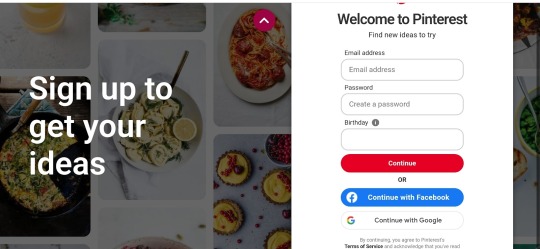
Now, if you have not come across the wonders of pinterest I must direct it towards you as some are stimulated by music others are stimulated by photos. Helping to visualise characters, clothing, setting they have many wonderful photos for this, as well as plenty of information that can be shared on history, culture, creative ways to get rid of a body etc. There are also posts specifically tuned for writers, a large amount coming from Tumblr blogs which I would also recommend looking at.
⚝──⭒─⭑─⭒──⚝
⊱ ────── Reedsy ────── ⊰

The next site I recommend is Reedsy. Reedsy is an online blog and website that connects writers, editors, artists and publishers. They have writing software where you can write your book in a publishable format, they have apps and tools that vary from generators and prompts to online classes that you can subscribe to. They also have writing competitions which help to create portfolios for new writers. At Reedsy you can meet other like minded individuals through the marketplace and post for your online portfolio.
⚝──⭒─⭑─⭒──⚝
⊱ ────── Fantasy Name Generators ────── ⊰
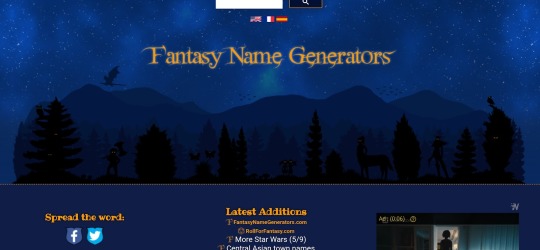
Now to some writers, using Generators can seem like a cheat but if you’re stuck then this website is a good place to go, whether you’re struggling with world-building or character creation and need some good names there’s always something you can find and note down. A tip to give would be to take two names and mix them to come up with something new, that way it also feels a little less of a cheat.
⚝──⭒─⭑─⭒──⚝
Finishing here, I hope that any of these tools are useful for you as they have been for me in organising my creative chaos. And my last piece of advice for any unpublished writer or writing student would be not to compare your works in progress with any published works. Who knows which draft number it is so don’t compare it to your first!
⚝──⭒─⭑─⭒──⚝
#creative writing#writing process#writing inspiration#writers on tumblr#writeblr#creative prompts#spotify#writing prompt#journaling#planning#on writing#writing tips#student tips#student learning#university#student life#study tips#creative women#creative works
23 notes
·
View notes
Text

Writing an eBook Involves Several Key Steps
Creating an ebook can be both a rewarding and strategic process, especially when following a detailed roadmap. Here’s an expanded version of the steps:
1- Plan and Outline: Begin by identifying the purpose and core message of your ebook. What problem are you solving, or what story are you telling? Research your target audience to tailor your content specifically to their needs and interests. A strong outline helps you stay organized and ensures you cover all essential points. Break your book down into chapters or sections, with each addressing a key aspect of your topic or narrative.
2- Write the Content: With your outline as a guide, dive into the writing process. Set daily or weekly writing goals to maintain momentum. Stay authentic to your voice and keep your audience in mind throughout the writing process. Whether you’re crafting a fiction novel or a non-fiction guide, aim for clear, engaging, and informative content that adds value. Focus on providing a unique perspective or insights that differentiate your ebook from others in the market.
3- Edit and Proofread: After completing your first draft, step away for a while before revisiting it with fresh eyes. This distance can help you spot inconsistencies or areas that need improvement. Consider hiring a professional editor or using tools like Grammarly for grammar checks. Editing isn’t just about fixing errors; it also involves improving sentence structure, tone, and the overall readability of your book. Proofreading should be the final step to catch typos, formatting issues, and other minor mistakes before publishing.
4- Format Your Ebook: Ebook formatting ensures that your content looks professional across different devices, whether it’s being read on a Kindle, tablet, or phone. Platforms like KDP and Apple Books have specific requirements, so use formatting software or services like Calibre or Vellum to ensure your ebook is ready for digital publication. Don’t forget about the importance of a visually appealing cover – it’s often the first thing a reader notices. A well-designed cover can significantly increase your ebook’s appeal.
5- Publish and Promote: After formatting, choose your platform for distribution. Shabd.in is one of the most popular platforms, but you might also consider Apple Books, Amazon Kindle Direct Publishing (KDP), Kobo, or Google Play Books, depending on your target audience. These platforms often allow authors to set pricing, distribution options, and even choose royalty rates. After publishing, the hard work of promotion begins. Utilize social media, your website, email newsletters, and even paid ads to get your ebook in front of potential readers. Offering free sample chapters or hosting a virtual book launch can help build momentum.
By following this comprehensive guide, you’ll not only produce a high-quality ebook but also effectively promote it to reach a wide audience, ensuring your ebook’s success.
Source -
2 notes
·
View notes
Text
Thinking about A Tale of Two Cities.
Writers are readers. As a writer, I find it best not to stick too closely to any specific genre, author, theme, or literary era. I try to dance between fiction by modern authors, non-fiction, comics, and classic literature. I love the range and diversity in approaches. But there is something magical about classic literature that I think other authors should consider: the sheer complexity of the stories.
We live in an age where there are more tools for crafting a good story than ever before. We have tools like World Anvil, Scrivener, and Grammarly to help organize and edit writing outside of basic word processing software like Word, Office Online, and Google Docs. Personally, I use OneNote to organize all my disparate elements during my pre-writing phase. Then we use armies of ARC readers, beta readers, proofreaders, and editors to give us feedback and help us massage our creations into well-formed pieces of art. But for classic literature giants like Poe, Dickens, or Austen, these tools did not exist. They wrote by hand under lantern light, candlelight, or sunlight; and their stories are vivid, dramatic, with layered characters, and surprising twists and turns properly set up with subtle elements woven deftly into their narratives.
Take, for instance, "A Tale of Two Cities." I recently reread this book and was reminded of Dickens' mastery of the craft with two elements that seemed so pointless when you first come across them. If you haven't read the story, please do. I know some classics can be tough to read. Even I have trouble remaining focused on them from time to time. My last reading of it was an audiobook, and I definitely recommend this approach if you struggle with the language used in such classics.
If you have read it and come back to this blog, you will definitely remember Madame Defarge. She often sits in the corners of some scenes in the book. However, by the end, she is the embodiment of the antagonistic forces arrayed against our heroes. She is, on the surface, a very flat character whose only role is to represent the horrors of the Reign of Terror during the French Revolution.
The second character that always surprises me is one of the first characters introduced in the story: Jerry Cruncher. Jerry is a minor character who pops in and out of the story from time to time. He is a porter at the bank but supplements his income at night as a resurrection man who steals newly deceased bodies and sells them to medical schools. In one part of the story, his young son follows him to one of these nightly excursions where he decides that he wants to be a resurrection man when he grows up.
What I admire most about the approach Dickens employs to both these characters is how unimportant they are throughout most of the story. And yet, not a word is wasted on them. Once their great contributions to the narrative are exposed towards the end, the reader is left with this sudden understanding of how complexly these two were woven into the story from the beginning.
Madame Defarge’s initial appearances could be ignored if not for Dickens' insistence that we know she is there knitting, knitting. She is only remarkable by the repetition of the word “knitting” as though Dickens is whispering to the reader, “pay attention to this woman.” But she is not the important character in those scenes, until we find out later, when the revolution is in full swing, who she is, and what she has been doing.
Defarge was a victim of the aristocracy. We learn that we have been told throughout the story how she was victimized, what was done to her, and the people she wants vengeance on. We learn that as she knitted in the wine shop, she stitches the names of the victims who will succumb to her justice. By the end of the story, we learn that Dickens was telling us her story (and the story surrounding the greater conflict between the rich, the poor, the aristocracy, and the revolution) the entire time, while using Manette, Lucie, Darnay, and Carton as the main characters driving the plot through their various trials and tribulations.
Then there is our minor character, Jerry Cruncher, a character who pops in at some very important pieces of the story, but we don’t understand how important until the very end, when his knowledge of a fake burial is used to blackmail Barsad, which allows for Carton to sacrifice himself for Darnay. Every single appearance of Jerry is notable in that he is part of some key points in the story but is essentially a giant lever, forcing the plot of the story to end in the only way it could. He is a seemingly minor character in scope but has an outsized influence on the outcome of the story. Throughout my reading of the story, I often find myself wondering why this guy matters at all, until he finally does. And then, when he does matter, you learn that he always did, just not in any way you might expect.
All the complexity and artistry aside, we know that Dickens is one of the literary world’s greatest writers. That makes it easy to dismiss the mastery on display in this novel. But I want to argue a very specific point. Dickens published 45 chapters, nearly 140 thousand words, in 31 weekly installments. He wrote the novel by hand, and then released it in pieces. I don’t know how he organized the story before he put down the ink. It doesn’t matter. The story is dense, packed with subtle scenes, breadcrumbs galore, and subtle little twists and turns. Seeds are planted in early pages to bud or bear fruit after chapters that leave the reader wondering not how he did it, but how did he do it without us noticing. No one, not in the past 165 years since its creation, regardless of the advancements in literary craft or technology, has anyone come close to doing what Dickens has done in A Tale of Two Cities.
As readers and authors, we often find ourselves hyper-focusing on the current literary trends, with the latest and greatest masters of the craft, and digging into the commercial and artistic tone setters of today’s best books. Best sellers and independent diamonds pile up in mounds of new content begging for our attention. A rare few catch our eye and our interest, and we devour them while we look at our own stories and wonder how they would fit in the current landscape. We wonder at the commercial value of our book series and hope to the literary gods that someone might touch one of our books and think they belong on their shelves next to Harry Potter and whatever tomorrow’s version of A Song of Ice and Fire will be. And those of us who write to tell stories, regardless of profit, still hope those stories will be read, when there is so much reading left to do.
And we forget that among those books stand giants holding classics that make all of us modern wordsmiths look like amateur children who have just learned to play at making stories. They laugh at our careful planning and our complex narratives so carefully organized with the best machines built for thinking that man has made accessible to us.
For many readers, there is no greater treasure than to find a classic masterpiece and realize how wonderful they are. For others, they will never come to those stories. They will read many things throughout their lives. Their lives will be richer after having read them. But I can’t help but feel a little sad knowing what they are really missing.
Speaking of readers finding new stuff to read:
I am an independent author looking for more readers to read my stories. Check out my books on my website via the link below.
#my writing#writeblr#writers#writers on tumblr#readerscommunity#fiction#classic literature#charles dickens#a tale of two cities#mythoughtsonwriting
2 notes
·
View notes
Text
AI Books Review – Create Super Profitable Ebooks in Any Niche!
Welcome to my AI Books Review, This is a genuine user-based AI Books review where I will discuss the features, upgrades, price, demo, and bonuses how AI Books can benefit you, and my own personal opinion. This is a brand new AI-powered application that helps you create and sell super profitable eBooks, info products, eBook Covers and lead magnets in just 60 seconds.
Everyone is aware that eBooks often fetch higher prices compared to physical books, and their market growth could be significant due to the increasing adoption of eBooks among consumers. This innovative software program leverages the power of artificial intelligence (AI) to streamline the book creation process from start to finish. Whether you’re a seasoned author facing writer’s block, an entrepreneur seeking to establish brand authority, or an educator crafting captivating learning materials, AI Books promises to be your one-stop shop for efficient and high-quality book creation. We’ll also address potential drawbacks like limited creative control and originality concerns. Ultimately, this review aims to equip you with the knowledge needed to decide if AI Books is the right tool to fuel your book creation journey.

AI Books Review: What Is AI Books?
AI Books promises to be a game-changer for aspiring authors. It’s a software program that leverages artificial intelligence (AI) to streamline the book creation process. Imagine this: you input keywords or a basic outline, and the AI engine generates text for various sections of your book. This can be a massive time-saver, especially for those struggling to overcome writer’s block or facing tight deadlines.

However, AI Books is more than just a content generator. It offers a drag-and-drop editor for refining the text, a stock library for visual enhancements, and mobile optimization to ensure your book reads flawlessly on any device. This review goes into more detail about its pros and cons, as well as how it stacks up against other AI writing tools.
AI Books Review: Overview
Creator: Ned King
Product: AI Books
Date Of Launch: 2024-Jul-01
Time Of Launch: 10:00 EDT
Front-End Price: $17 (One-time payment)
Official Website: Click Here To Access
Niche: Tools And Software
Support: Effective Response
Discount: Get The Best Discount Right Here!
Recommended: Highly Recommended
Bonuses: Huge Bonuses
Skill Level Required: All Levels
Discount Code: “AIBOOKS5” To Get $5 Off Full Funnel!
Refund: YES, 30 Days Money-Back Guarantee
>> Click Here To Get AI Books Now & Limited Time Access <<
AI Books Review: Features
Create Unlimited st eBooks to in-depth long eBooks as per your marketing needs.
Loaded With 10K+ DFY Ebooks & PLR Articles.
Fully customizable Drag & Drop Ebook cover builder lets you create amazing ebook covers.
Built-in AI Content & Graphics Generator.
Fully Customizable eBook Builder lets you customize ebook templates and create your eBooks in a flash.
Add Your Branding to eBooks.
Specialized Training to Sell Your eBooks on Amazon Kindle, eBooks.com, Smashwords, Google Play Books etc.
Ready-To-Profit Automatic Account Set Up.
Add and manage unlimited chapters to your eBook.
Flipbook Creator plugin to Convert your eBooks into flip books.
Unlimited Stock Media to use in your eBooks promotion and selling.
Add Conversion Boosting Elements, Lead Magnet Inside eBook.
100% Cloud Based Software
Inbuilt Lead Capture Form for Your Website in Addition to Optin Popup.
Training & Tutorial, plus 24 Hours Support
AI Books Review: How Does It Work?
Just 3 Easy Click is All You Need to Create Engaging eBooks
Step #1:
Choose from DFY eBooks & Articles or Create one from Scratch.
Step #2:
Customize your eBook & Design eBook Cover Using Drag & Drop Editor
Step #3:
That’s it! Download your Stunning eBook and use it anywhere you want or sell it.
>> Click Here To Get AI Books Now & Limited Time Access <<
AI Books Review: Can Do For You
World’s Best AI-Based eBook Creator App
Easy Drag & Drop Fully Customizable Templates to Create eBooks in a Flash
Create and Sell eBooks in Every Possible Niche
Built-In AI-Powered Content and Graphic
Generator
No need to write content and design anything.
100% Cloud-Based Tool Hosted On Reliable Server For Seamless Usage on Any Device
No Tech Skills Required, 100% User Friendly.
Turn Any Article into an eBook with ease.
Fully Customizable eBooks Cover Builder to let you create attractive eBook Covers
Add & Manage Unlimited Chapters to your eBooks
Add Conversion Boosting Elements Inside eBooks — like CTA Button, Images, heads & footer, etc.
Free Commercial License Included
Create a Mini eBook or an in-depth long eBook as per your
need.
Full 30-Day Money Back Guarantee!
AI Books Review: Who Should Use It?
Digital Marketer
Entrepreneur
Podcaster
Affiliate Marketer
SEO Expert
Email Marketer
Coaches
Blogger
Social Media Marketer
ECom Store
Owner
Website Owner
Any Other Possible Niche
AI Books Review: OTO’s And Pricing
Add My Bundle Coupon Code “BOOKADMINMAX″ — For $30% Off Any Funnel
Front End Price: AI Books ($17)
OTO 1: AI Books Pro ($27)
OTO 2: AI Books DFY ($47)
OTO 3: AI Books Flipbooker ($47)
OTO 4: AI Books Agency ($47)
OTO 5: AI Books Reseller 100 ($47)
OTO 6: AI Books Reseller Unlimited ($67)
>> Click Here To Get AI Books Now & Limited Time Access <<
AI Books Review: My Special Unique Bonus Bundle
My Special Unique Bonus Bundle will be visible on your access page as an Affiliate Bonus Button on WarriorPlus immediately after purchase.

And before ending my honest AI Books Review, I told you that I would give you my very own unique PFTSES formula for Free.
AI Books Review: Free Bonuses
BONUS #1: Video Training on How to Publish & Sell Your eBook on Amazon Kindle
Amazon is now the biggest and most trusted online marketplace on the internet, so just having your book published on the Kindle site elicits automatic trust. Publishing your ebook to the Amazon Kindle platform is free and will give you a whole new marketplace full of targeted prospects. So, bring your ebooks into the twenty-first century by publishing them in the hottest marketplace available! And make a successful Internet business.
BONUS #2: Kindle eCover Pack
Inside this bonus package, you are about to receive 50 Kindle covers that will help you make a lot of sales online.
BONUS #3: eBook Creation & Promotion Tricks Newbies
Discover How YOU Too Can Create Your Own Collection of In-Demand, Profit-Pulling Info Products In Just Minutes From Now!
BONUS #4: How To Make Money with Kindle
Marketers that aren’t looking into Kindle are sorely missing out on one of the very best means to generate income currently available online. This is the business model that many rely on because it lets us make nearly 100% profit from all our sales.
BONUS #5: Miscellaneous Stock Photos
Inside this bonus is a bundle of high-definition photos that you can use for your own projects freely.
AI Books Review: Money Back Guarantee
And Your Investment is Risk Free with our 100% Money Back Guarantee
You may purchase with confidence because if you have a technical problem that we cannot handle, just open a ticket within 30 days and we will reimburse you everything, down to the last cent. However, we are certain that once you have AI Books, you will not ask for a refund.
>> Click Here To Get AI Books Now & Limited Time Access <<
AI Books Review: Pros and Cons
Pros:
Increased Efficiency: AI can significantly reduce writing time by generating content, outlines, and character profiles.
Overcoming Writer’s Block: Spark ideas, break creative roadblocks, and keep the content flowing even when inspiration dips.
Content Exploration: Experiment with different writing styles and explore new avenues in your writing.
Accessibility for Beginners: The user-friendly interface makes book creation approachable, even for those with limited writing experience.
Cons:
You need to be connected to the internet to use this tool.
In fact, I haven’t found any additional AI Books issues.
Frequently Asked Questions (FAQ’s)
Q. What is AI Books?
AI Books is an advanced AI-powered tool designed to assist in the creation, editing, and publishing of books across various genres, providing efficiency and quality.
Q. How does AI Books improve efficiency in book creation?
AI Books automates many aspects of the writing process, significantly reducing the time and effort required to produce high-quality content.
Q. Can AI Books be used for self-publishing?
Yes, AI Books is highly effective for self-publishing, offering tools and features that cater specifically to independent authors.
Q. What are the main limitations of AI Books?
Some limitations include issues with creative originality and difficulties in genre-specific writing, which users should consider before integrating it into their workflow.
Q. How frequently is AI Books updated?
AI Books is regularly updated with new features and advanced AI algorithms to enhance its capabilities and user experience.
AI Books Review: My Recommendation
AI Books offers a compelling solution for those seeking to expedite book creation. Its AI-powered features can significantly boost efficiency and overcome writer’s block. However, the crucial question remains: is AI-generated content a springboard to success or a shortcut to mediocrity? This review has equipped you with the knowledge to weigh the potential benefits and drawbacks. Ultimately, the decision of whether AI Books becomes your writing companion hinges on your individual needs, expectations, and commitment to crafting a truly unique and impactful book.
>> Click Here To Get AI Books Now & Limited Time Access <<
Check Out My Previous Reviews: Scalar App Review, AI Gigz Hub Review, WP Funnels Review, Gizmo Review, Auto Health Sites Review, Vocal Clone AI Review, TubeBuildr AI Review, & ClickSchedule Ai Review.
Thank for reading my AI Books Review till the end. Hope it will help you to make purchase decision perfectly.
Disclaimer:
It’s important to note that pricing and specific features of AI Books can change. While this review strives to provide accurate information, referring to the official AI Books website for the latest updates is recommended. Additionally, this review is not a substitute for your own judgment. We encourage you to explore AI Books and similar software options to determine the best fit for your book creation journey.
Note: This is a paid software, however the one-time cost is $17 for lifetime access.
#AI Books#AI Books App#AI Books Upgrades#AI Books Overview#AI Books Features#AI Books Review#AI Books Works#What Is AI Books#Buy AI Books#AI Books Price#AI Books Demo#AI Books Discount#AI Books Honest Review#AI Books Pricing#AI Books FE#AI Books Pros#AI Books OTO#AI Books Preview#AI Books Scam#Get AI Books#AI Books Reviews#Purchase AI Books#AI Books Legal#Artificial Intelligence#AI#AI Books Benefits#AI Books Bonus#AI Books Bonuses#AI Books Software#AI Books Software Review
4 notes
·
View notes
Note
hey!!
just gotta say thanks for everything u do for the fandoms! having such a good, clear wiki is so useful when looking for references and so i thouhgt i would try to make my own wiki for a different fandom but theres just one thing i cannot find out how to do. i might be being so stupid right now so forgive me.
above each gallery photo, when you click on it, it says 'added by [user], posted in [production] [character] [actor]'. ive tried so hard to figure out how to do this but to no avail. ive added the pictures to the pages i need them in but they dont have the bit that says 'posted in [___]'. ive added the picutres to category pages thinking that would work, and it does make a category for the picutres but i cant get them to show up on all the pages i want them to. i just want the images to link to all the pages needed, but not as a caption below the gallery, if that makes sense?
im not sure if youre the right person to ask this to, so dont feel obligated to answer but thank you nonetheless! :o)
Hey! Wikis are such a learning curve, ugh there's still stuff I really struggle with - I edited a template successfully and that was a big victory! :P
Are you building your wiki on fandom.com? There's slight differences in how the wiki software works on different sites, and that can trip you up.
I'm not quite sure what's going wrong with your images - are they showing up in the gallery on the page you want them to? Categories are great for finding the images behind the scenes but I don't think that's the problem you're hitting.
The best advice I can give is always use the source editor! It gives you way more control, and for me (I'm dyslexic) the fact it's colour-coded is enormously helpful.
Use a sandbox as a scrap book, you should be able to make a personal one by making a new page (username)/Sandbox. Look at the code on other wikis - go to source editor as if you're editing the page then just don't save :D Just compare what the working one on another wiki looks like to yours. Little things like spaces at the beginning of lines can mess things up! But things that are infobox or template won't always copy across to your wiki - you need to add the templates to your own wiki and that's where I get lost! But the basic code is all standard, and looking at the code itself lets you control what's going where.
Good luck with it... it'll be so satisfying once you crack the problem and get it all exactly right!
6 notes
·
View notes
Text
SEEKING ADVICE
Today I received this email: "I'm looking for some advice. I'm an aspiring comic artist, I'm still learning by attending the last year of comic school. I'd like to know what a professional penciler or colorist portfolio should look like for you."
Here was my answer:
Before submitting your portfolio, take the time to check out what the publisher is publishing. Check out their website. Look at their books. If your stuff doesn't "fit" what they're doing, it may not be the best place to seek a job.
Be smart with preparing your portfolio. If you're preparing a .PDF of your work, create a cover page with some great art, your name and full contact information and credits (if any). Make sure your name is in the file name of your .PDF, so there's no guesswork who sent it.
See if the potential employers have specific requirements for your submission. If they want a single .PDF of your work, don't submit .jpgs. If they want a download link to your work, send tht link, not an email stuffed with a large file. Don't send them to an ArtStation or DeviantArt account that's packed with old stuff or art unrelated to the job you want.
A professional portfolio should be clear about what kind of assignment or job you are applying for. More important, it should look as though you've already been doing it for years.
For a professional editor or agent, it's disheartening to see a portfolio that LOOKS like an "art school portfolio" stuffed with unrelated assignments and sketches.
If you want to be a graphic designer, show your finished graphic designs that look like read book pages, ads, brochures, or whatever you're showing. If you want to be a cover artist, show me some covers. If you want to draw licensing art (Disney, Dreamworks, whatever), you have to prove you can draw on-model without copying/tracing drawings you've already seen.
If you want to draw comics, then DRAW COMICS. Showing sketches of characters with balled-up fists and gritting their teeth are useless to me. Comics are sequential storytelling where characters live and breathe on the page in consistent environments convincing in the style you use. Body language, gesture, expression, are all critical. Do characters interact with their environments? Do they make eye contact? Are they believable?
Also remember that experienced editors and agents already know all the tricks. If your work looks digital to them, they'll wonder why you didn't do enough to make it look better. If you swipe, they'll usually catch the swipes.
And if you use AI (plagiarism software), you've already lost the job.
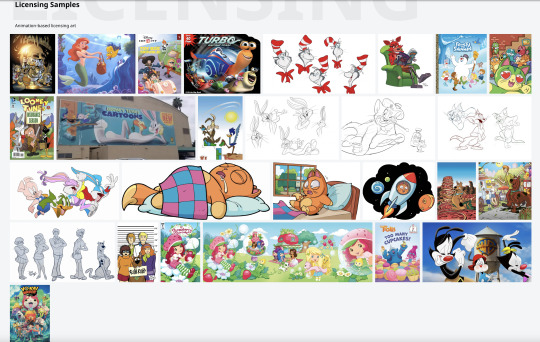
2 notes
·
View notes